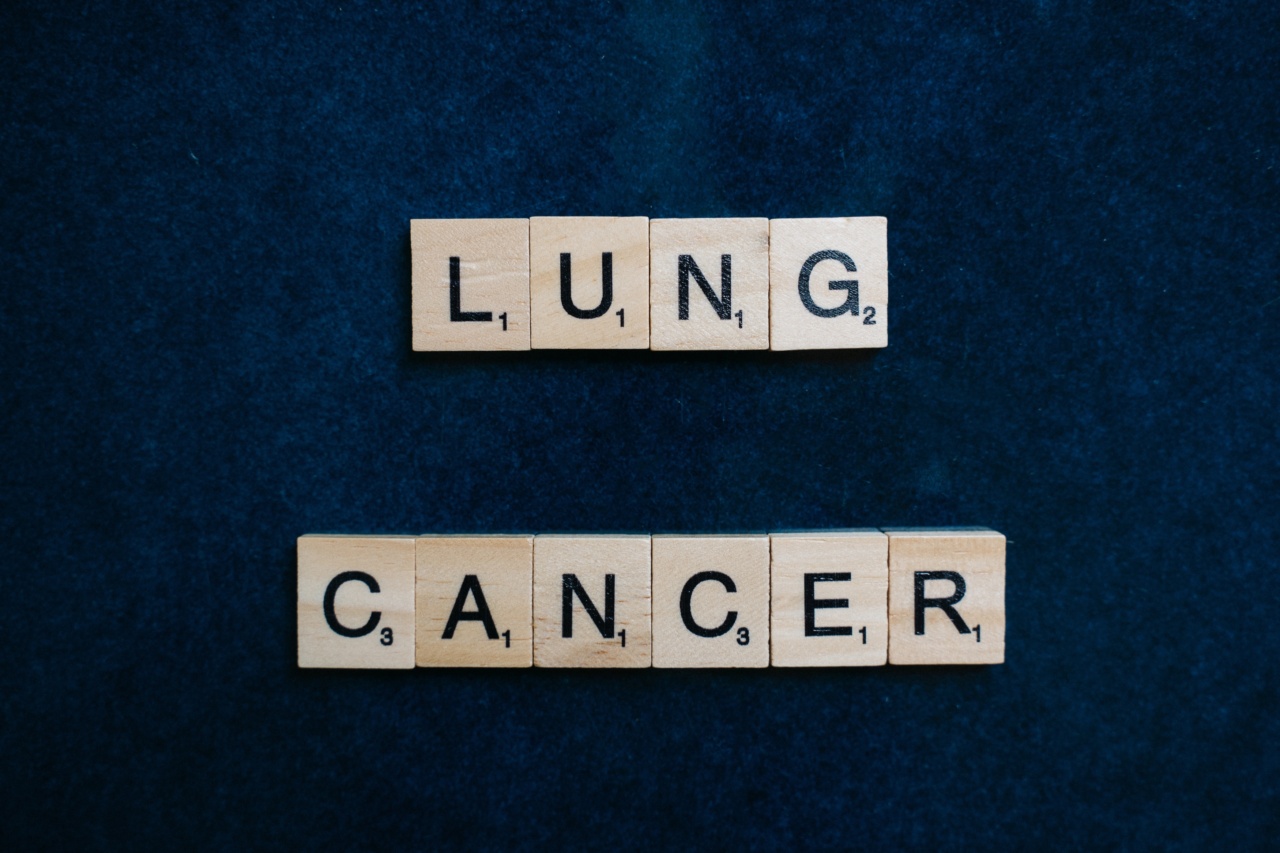Lung cancer is a devastating disease that affects millions of people worldwide, with smoking being the most well-known risk factor. However, there are also unexpected contributors to the development of lung cancer that many people may not be aware of.
These hidden factors can increase the risk of developing this deadly disease, and it is important to be educated about them in order to protect ourselves and our loved ones.
Pollution
Air pollution is a significant contributor to the development of lung cancer. The inhalation of pollutants such as particulate matter, nitrogen dioxide, and sulfur dioxide can cause inflammation in the lungs and lead to the formation of cancer cells.
This is especially true for those who live in heavily polluted areas or work in industries that expose them to high levels of pollutants.
Radon Gas
Radon gas is a naturally occurring radioactive gas that can seep into buildings and accumulate to dangerous levels.
Prolonged exposure to radon gas increases the risk of developing lung cancer, and it is estimated to be responsible for thousands of lung cancer deaths each year. Testing your home for radon gas and taking necessary measures to reduce its levels can help protect you and your family.
Asbestos
Exposure to asbestos, a mineral commonly used in construction materials, is another unexpected contributor to lung cancer.
Inhalation of asbestos fibers can cause scarring and inflammation in the lungs, which can eventually lead to the development of lung cancer. This risk is especially high for those who work in industries such as construction, shipbuilding, and mining, where asbestos exposure is common.
Genetic Factors
While lung cancer is often associated with lifestyle factors such as smoking, there are also genetic predispositions to the disease.
Certain gene mutations can increase an individual’s susceptibility to developing lung cancer, even in the absence of other risk factors. Understanding these genetic factors can help identify individuals who are at a higher risk and allow for early detection and intervention.
Radiation Exposure
Exposure to high levels of radiation, whether through medical procedures or occupational hazards, can significantly increase the risk of developing lung cancer.
Medical imaging tests such as chest X-rays and CT scans that use ionizing radiation should only be performed when medically necessary. Additionally, workers in industries that involve frequent exposure to radiation, such as uranium mining or nuclear power plants, should take appropriate precautions to minimize their exposure.
Secondhand Smoke
While smoking is a well-known risk factor for lung cancer, many people are unaware that exposure to secondhand smoke can also increase the risk.
Breathing in the smoke exhaled by smokers or the smoke from burning tobacco products can be just as harmful as smoking itself. It is important to create smoke-free environments and protect non-smokers, especially in enclosed spaces such as homes and workplaces.
Diet and Nutrition
The foods we eat can also play a role in the development of lung cancer. A diet high in processed foods, red and processed meats, and unhealthy fats can increase the risk of developing various types of cancer, including lung cancer.
On the other hand, a diet rich in fruits, vegetables, whole grains, and lean proteins can help prevent cancer and promote overall health. Making healthy dietary choices is essential for reducing the risk of lung cancer.
Hormonal Factors
Research suggests that hormonal factors may contribute to the development of lung cancer, particularly in women. The hormone estrogen, for example, has been found to promote the growth of lung cancer cells.
Hormone replacement therapy (HRT) and certain hormonal contraceptives have also been associated with an increased risk of lung cancer. Understanding these hormonal factors can help healthcare providers tailor therapies and interventions to mitigate the risk in susceptible individuals.
Occupational Hazards
Occupational hazards, such as exposure to certain chemicals and substances, can significantly increase the risk of developing lung cancer.
Examples include exposure to asbestos, silica dust, diesel exhaust, and certain chemicals used in industrial processes. It is important for workers in these industries to be aware of the potential risks and take appropriate measures to protect themselves, such as wearing protective gear and following safety protocols.
Prevention and Early Detection
While these unexpected contributors to lung cancer may seem daunting, there are steps individuals can take to reduce their risk.
Avoiding smoking and exposure to secondhand smoke is crucial, as is maintaining a healthy lifestyle with a balanced diet and regular exercise. Regular check-ups and screenings can help detect lung cancer at an early stage when treatment options are more effective. Creating awareness about these hidden risk factors can also help protect others from developing this devastating disease.
Conclusion
While smoking remains the leading cause of lung cancer, there are several unexpected contributors to the development of this disease.
From environmental factors like pollution and radon gas to genetic predispositions and occupational hazards, it is important to be aware of these hidden risks. By understanding and taking necessary precautions, we can reduce the risk of lung cancer and protect our health.





























